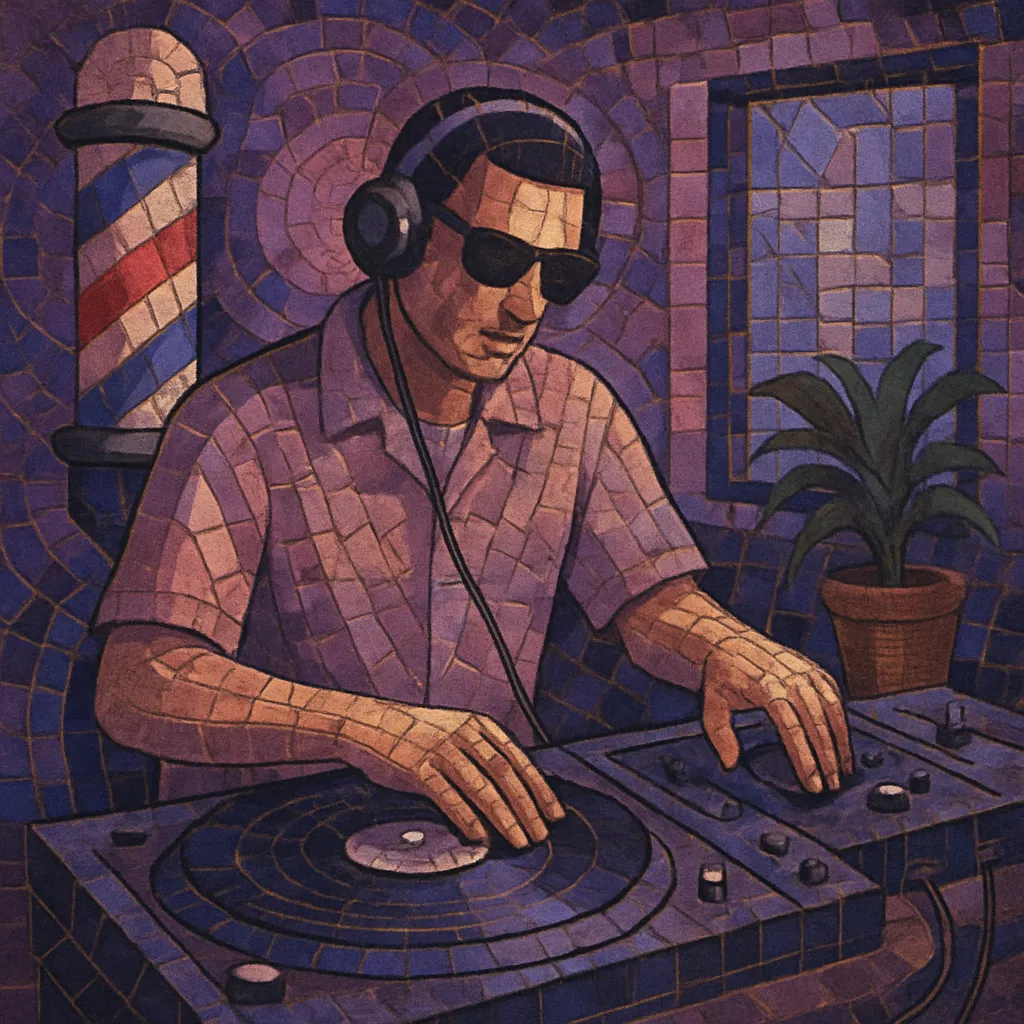
Barber beats is a vaporwave-adjacent microgenre characterized by slowed, loop-based instrumentals built from lounge, smooth jazz, and easy-listening samples. Producers emphasize a soft, cushiony drum groove, heavy time-stretching, subtle pitch shifting, and warm, dusty textures that evoke waiting rooms, lobbies, and late‑night cable atmospheres.
Typical tracks sit around 85–105 BPM, lean on mellow chords, brushed snares or gentle drum-machine kits, and favor tasteful filtering, vinyl crackle, and roomy reverb. The result is hypnotic, low-stakes background music that feels both nostalgic and liminal—less overtly ironic than classic vaporwave, yet still rooted in sample-based moodcraft and retro corporate aesthetics.
Barber beats emerged in the early 2020s as a distinct strain of vaporwave’s broader ecosystem. Building on the mallsoft and late‑night lo‑fi traditions, producers sharpened the focus on lounge and smooth‑jazz source material, slowing and looping it into relaxed, endlessly playable grooves. The name alludes to both the aesthetic of waiting-room background music and the prominence of the producer “haircuts for men,” whose output and branding helped crystallize the style’s identity.
On Bandcamp, SoundCloud, and 24/7 YouTube streams, the sound coalesced around soft drum programming, hushed harmonies, and restrained processing: low-pass filtering, gentle saturation, and subtle sidechain give samples a plush, “padded” feel. Rather than the satirical corporate détournement typical of early vaporwave, barber beats tends toward unobtrusive comfort listening—music you can put on for hours while working or relaxing.
Curated playlists, Discord servers, and niche labels normalized the tag and encouraged uniform visual branding (soft pastels, indoor public spaces, minimal typography). As the term spread, it became a convenient label for a specific, lounge-forward, sample-based mood within the larger vaporwave and lo‑fi constellation.
Barber beats inherits vaporwave’s sampling ethos and mallsoft’s infrastructural nostalgia, but it shifts the affect from critique to coziness. Its source pool overlaps with city pop, library music, and light jazz fusion, placing it near lo‑fi hip hop and chillout while retaining vaporwave’s looping, textural priorities.

